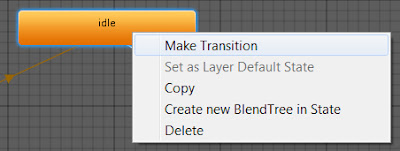NME17AP
Lukuvuosi 2017-2018
Animating sprites in Unity is fairly easy. First thing you’re going to need is a sprite sheet. It’s a (preferably) Photoshop document where all the sprites are evenly placed for animation. Make sure that there are no odd pixels in the sprite sheet since those are a real pain to remove later and if not removed they will create small selection areas in the sprite editor and those will be included in the animation.
When you have the sprite sheet import it into Unity. Select the usual settings from the inspector but this time choose multiple for the sprite mode. After applying the settings click open the sprite editor.
If the sprites are placed correctly in the sprite sheet, then automatic slicing can be used. This will create the animation frames automatically. If the sprites are following a regular pattern on the sheet, then grid by cell size/count can also be used.
In the project window you can no click the sprite sheet open. Select all sprites with shift key and drag them to the scene. This should automatically open a window for saving your animation. Create a new folder named animations and save your animation under it.
Now you can start to work on your animation. Set your sample rate for 60. This means it plays 60 per second. Now move your frames in the animation window so that you get the right speed for a smooth animation. With the play button you can test the animation and when it’s complete push the record button to stop the recording. Create animation for both idle and walking states.
Then you need to open the animator window. It can be opened from the top tool bar under window tab. In the animator window you need to create a new state for walking. By default, there should already be idle state. Rename the created state and choose the correct motion for it. The motion will be the earlier created animation for walking which should be found in the list of motions.
You need to connect the states. This is done with transition. If you right click the idle state a window pops up allowing you to choose the make transition action. Do this both ways so the animation will flow back to the idle state.
Next stop is to create a new parameter. This will define which state will be used when moving the character. Create Boolean and name it. Boolean is a data type containing two values: true and false.
Now you need to use the newly created parameter in the states. You can open new options by clicking the transitions in the inspector. At the bottom in the conditions you can use your boolean parameter. The idle state will need to use true value because with true in transitions to the walking state. In the walking state it will be opposite.
Lastly you need an action for the playmaker to understand the animator. Use set animator bool action in your walking FSM. Put checkmark in the value section. This will make the bool true and walking animation will commence. Don’t put the checkmark in the idle state and the idle animation will play when the character is not moving.
Here are some Unity tutorials explaining the animation and animator more profoundly:



































